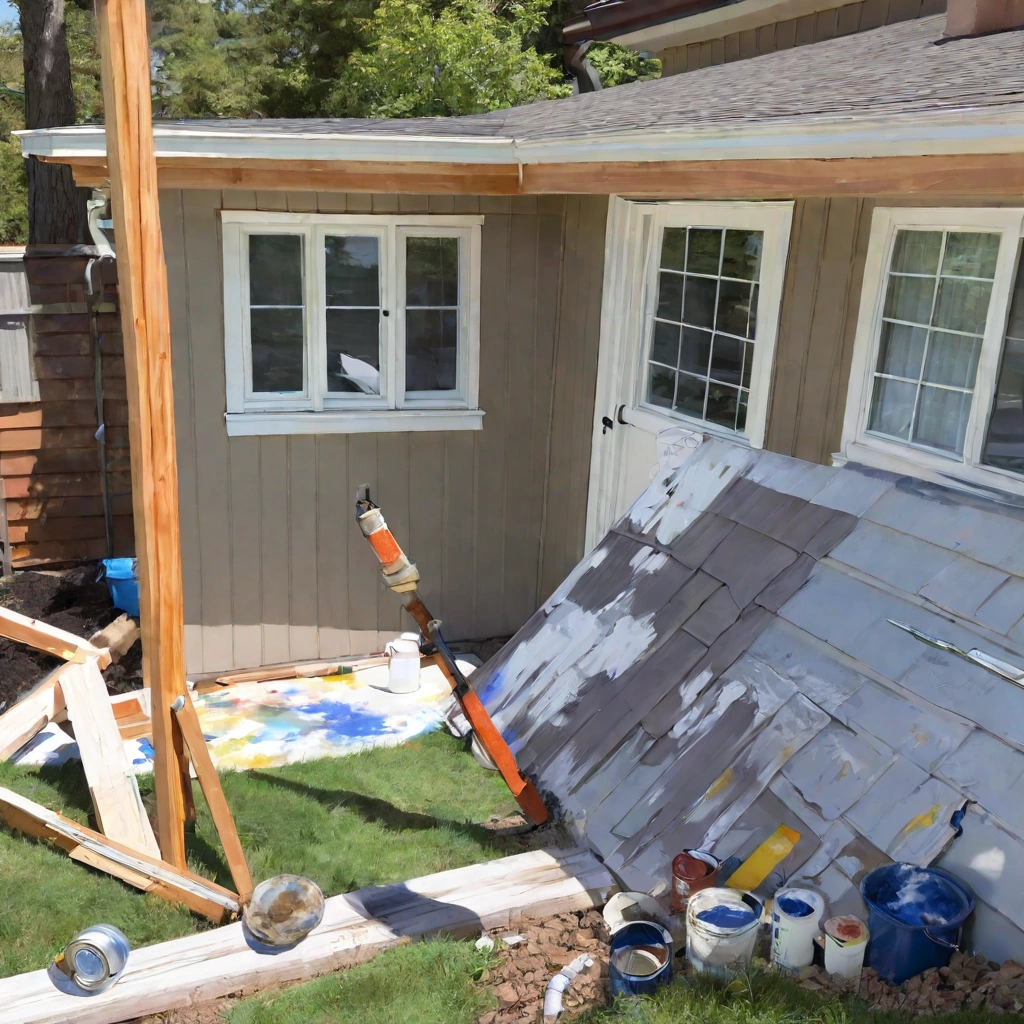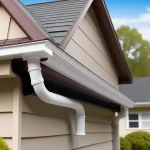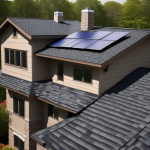Vinyl vs. Aluminum Siding: A Head-to-Head Comparison for Homeowners
Vinyl vs. Aluminum Siding: A Comprehensive Comparison for Homeowners
Selecting the ideal home siding is a pivotal home improvement decision, influencing not only curb appeal but also the long-term structural integrity and market value of your property. Vinyl siding and aluminum siding represent two dominant choices in the exterior renovation landscape, each presenting distinct advantages and disadvantages that warrant careful consideration. This article offers a comprehensive siding comparison, meticulously examining key factors such as siding cost, siding durability, siding maintenance, siding aesthetics, siding environmental impact, and installation considerations.
Understanding these nuances is crucial for making an informed decision tailored to your specific needs and regional climate. We will delve into real-world examples and case studies, providing practical insights for homeowners, including international finance professionals managing properties across diverse climates. For instance, a property in a hurricane-prone coastal region demands different siding durability characteristics compared to a home in a northern climate subject to harsh winters. Furthermore, the long-term siding cost extends beyond the initial investment, encompassing maintenance expenses and potential repairs.
Therefore, a thorough analysis of both upfront and lifecycle costs is essential. This detailed exploration aims to empower you with the knowledge necessary to select the optimal house siding solution. Beyond practical considerations, the aesthetic appeal of home siding plays a significant role in enhancing property value and personal satisfaction. Vinyl siding offers a vast array of colors and styles, while aluminum siding provides a sleek, modern look. However, color retention and susceptibility to damage vary between the two materials. By understanding the trade-offs between vinyl siding and aluminum siding, homeowners can make choices that align with their aesthetic preferences and long-term investment goals. Ultimately, this comprehensive guide serves as an invaluable resource for navigating the complexities of siding selection and ensuring a successful home improvement project.
Long-Term Cost-Effectiveness: Initial Investment vs. Lifetime Expenses
One of the primary considerations for any homeowner is the long-term cost-effectiveness of their siding choice. Vinyl siding typically has a lower upfront cost than aluminum siding. The national average cost to install vinyl siding ranges from $3 to $8 per square foot, including materials and labor. Aluminum siding, on the other hand, generally costs between $4 and $11 per square foot. However, the initial price difference doesn’t tell the whole story. Over time, maintenance costs can significantly impact the overall expense.
Vinyl siding requires minimal maintenance, primarily occasional cleaning to remove dirt and mildew. Aluminum siding, while durable, is susceptible to dents and scratches, potentially requiring repairs or repainting, adding to the long-term cost. Furthermore, while both materials can last for decades, aluminum’s susceptibility to corrosion in coastal environments may shorten its lifespan, leading to earlier replacement costs. Considering these factors, a thorough cost analysis is crucial, factoring in not only the initial investment but also the projected maintenance and replacement expenses over the lifespan of the siding.
Beyond the base siding cost, homeowners should also consider the potential for increased home value. High-quality vinyl siding, particularly insulated vinyl siding, can improve a home’s energy efficiency, leading to lower utility bills and potentially qualifying for energy efficiency tax credits, further offsetting the initial investment. Similarly, while aluminum siding might require occasional repainting, a professionally applied, high-quality coating can significantly extend its lifespan and enhance its aesthetic appeal, potentially boosting curb appeal and resale value.
The choice between vinyl siding and aluminum siding, therefore, becomes a complex calculation involving not just initial expenditure but also long-term savings and potential returns on investment in home improvement. Moreover, the choice of siding material can influence insurance premiums. Some insurance providers may offer discounts for homes with more durable and weather-resistant siding options. While both vinyl and aluminum offer decent protection, aluminum’s resistance to fire might be viewed favorably by some insurers, potentially leading to lower premiums in fire-prone areas.
Conversely, vinyl’s susceptibility to damage from extreme weather events, such as hail, could lead to higher premiums in certain regions. It’s crucial for homeowners to consult with their insurance provider to understand how their choice of house siding impacts their insurance costs, factoring this into the overall long-term cost analysis. This aspect is often overlooked but can significantly influence the true cost-effectiveness of different home siding options. Finally, homeowners should factor in the embodied carbon and potential disposal costs associated with each material when evaluating long-term cost-effectiveness.
While the siding environmental impact might not directly translate to monetary savings, it reflects a growing concern among environmentally conscious consumers. Aluminum, being readily recyclable, offers a potential end-of-life value, whereas vinyl’s recyclability is more limited, potentially leading to landfill disposal costs. Considering the full lifecycle cost, including environmental factors, provides a more comprehensive understanding of the true long-term economic and environmental implications of choosing between vinyl siding and aluminum siding for their exterior renovation project.
Durability in Various Climates: Weather Resistance and Impact
The durability of siding is paramount, especially in regions with extreme weather conditions. Vinyl siding is known for its resistance to moisture, rot, and insects, making it a suitable choice for humid climates where these issues are prevalent. Its composition inherently resists water absorption, preventing the degradation that can plague wood-based siding options. However, vinyl siding can become brittle and crack in extremely cold temperatures, particularly if it’s a lower-grade product or improperly installed. Homeowners in northern climates need to consider this potential drawback and perhaps opt for impact-resistant vinyl formulations or explore alternative siding materials better suited to freezing conditions.
Understanding the specific climate challenges is crucial when evaluating siding durability. In contrast, aluminum siding is highly resistant to extreme cold and is non-combustible, offering superior fire protection compared to vinyl. This makes it a favorable option in areas prone to wildfires or where building codes prioritize fire-resistant materials. However, aluminum siding is more prone to dents from hail or impacts from falling debris. While these dents may not compromise the siding’s structural integrity, they can detract from its aesthetic appeal.
The gauge of the aluminum plays a significant role in its impact resistance; thicker gauges offer greater protection but also increase the siding cost. Homeowners should weigh the risk of impact damage against the benefits of fire resistance when making their decision. Fading is another critical factor influencing long-term siding durability and aesthetics. Vinyl siding can fade over time, particularly darker colors, due to prolonged exposure to ultraviolet (UV) radiation. This fading can lead to an uneven appearance and necessitate eventual replacement or painting, adding to the overall siding maintenance costs.
Aluminum siding, especially if properly coated with a high-quality finish, tends to retain its color longer and is less susceptible to UV degradation. While repainting aluminum siding is an option, modern coatings are designed for longevity, reducing the need for frequent repainting. Regarding impact resistance, aluminum is generally more susceptible to dents and scratches compared to higher-end vinyl options that incorporate impact modifiers, enhancing their ability to withstand impacts without damage. In hurricane-prone areas, both vinyl siding and aluminum siding need to be installed correctly to withstand high winds.
For example, homes in Florida often opt for reinforced vinyl siding or thicker gauge aluminum to mitigate wind damage. Proper installation techniques, such as using corrosion-resistant fasteners and ensuring adequate overlap, are essential for maximizing wind resistance. Furthermore, regular inspections and prompt repairs of any damaged sections can prevent further deterioration and maintain the home’s protection against the elements. Ultimately, understanding the specific climate challenges of your region, considering the siding cost, and prioritizing proper installation are essential for choosing the home siding material that offers the best long-term protection and value for your home improvement or exterior renovation project. A thorough siding comparison, considering all these factors, is crucial for making an informed decision.
Maintenance Requirements: Cleaning, Painting, and Repairs
Maintenance requirements are a critical factor in the long-term upkeep and overall siding cost of any home. Vinyl siding distinguishes itself as a relatively low-maintenance option, primarily requiring periodic cleaning to preserve its aesthetic appeal. This usually involves a simple washdown with soap and water to eliminate common environmental blemishes like dirt, algae, or mildew. While power washing can expedite this process, it’s imperative to exercise caution. According to the Vinyl Siding Institute, excessive pressure can damage the siding, leading to potential water infiltration and compromised siding durability.
Homeowners should use wide fan tips and maintain a safe distance to prevent any adverse effects, ensuring the longevity of their home siding. Aluminum siding, while robust, typically demands a more proactive maintenance regimen. Similar to vinyl, it benefits from regular cleaning, but its susceptibility to scratches and dents introduces additional considerations. These imperfections not only detract from the siding aesthetics but can also expose the underlying metal to the elements, potentially leading to corrosion.
Addressing these issues often involves spot repairs or even complete repainting, a significant undertaking that necessitates meticulous surface preparation, including sanding and priming, followed by the application of specialized paints formulated for metal surfaces. Neglecting this can lead to premature paint failure and further corrosion, increasing long-term siding maintenance expenses. Regular inspections, especially in coastal regions or areas with high humidity, are crucial for identifying and mitigating potential problems early on, safeguarding the integrity of the house siding.
Furthermore, the choice of cleaning agents can significantly impact the lifespan and appearance of both vinyl siding and aluminum siding. Abrasive cleaners and solvents should be avoided, as they can dull the finish and even cause discoloration. For vinyl, the use of mild, non-abrasive cleaners is recommended, while aluminum siding benefits from cleaners specifically designed to prevent oxidation. Home improvement experts often suggest testing any cleaning solution on an inconspicuous area first to ensure compatibility. In addition to cleaning, preventative measures such as trimming vegetation away from the siding can minimize the buildup of moisture and organic matter, reducing the frequency of required cleaning and extending the life of the siding. By understanding the specific maintenance needs of each material, homeowners can make informed decisions that optimize the performance and longevity of their exterior renovation investment.
Aesthetic Options: Color Retention and Style Variety
Aesthetic options are crucial for enhancing a home’s curb appeal and overall value, directly impacting resale potential and homeowner satisfaction. Vinyl siding offers a wide array of colors, styles, and textures, including embossed options that convincingly mimic the look of wood grain, stone, or even brick. This versatility allows homeowners to achieve a desired aesthetic without the higher siding cost associated with natural materials. However, color retention with vinyl siding can be a concern, particularly with darker shades like deep blues or reds, which are more susceptible to fading from prolonged UV exposure.
Manufacturers often address this with UV-resistant coatings and pigments, but it remains a factor to consider during material selection for any exterior renovation project. Aluminum siding also presents various colors and styles, though traditionally, the color is applied as a baked-on enamel or powder coating. While these coatings offer good initial color vibrancy, they can be prone to chipping, scratching, or fading over time, especially in areas with harsh weather conditions or frequent physical contact.
Proper maintenance, including regular cleaning and occasional touch-up painting, is essential to preserve the aesthetic appeal of aluminum siding. Style variety is another important factor. Vinyl siding excels in this area, offering numerous profiles such as traditional horizontal lap, contemporary vertical board and batten, scalloped or shake styles for a more rustic appearance, and even insulated options that enhance energy efficiency. Aluminum siding is generally available in horizontal lap styles, which provide a classic, clean look suitable for many architectural designs.
While some manufacturers offer vertical aluminum siding, the options are typically more limited than those available with vinyl. The choice of color and style should carefully complement the home’s architectural design, the surrounding landscape, and the homeowner’s personal preferences. For example, a modern, minimalist home might benefit from the sleek, clean lines of horizontal vinyl siding in a neutral gray or white, while a traditional colonial home might look best with the classic appeal of cedar-look aluminum siding in a warm, earthy tone. Ultimately, selecting the right siding aesthetics involves balancing personal taste with practical considerations like siding durability, siding maintenance, and the overall siding environmental impact.
Environmental Impact: Recyclability and Embodied Energy
Environmental impact is an increasingly important consideration for homeowners undertaking exterior renovation projects. Vinyl siding, a prevalent choice for house siding, is composed of PVC, a plastic material recognized for its durability but also its slow rate of biodegradation. While certain manufacturers offer vinyl siding products incorporating recycled content, the overall recyclability of vinyl remains a subject of debate within the home improvement industry. The embodied energy associated with vinyl siding, encompassing the total energy expended during its production from raw material extraction to manufacturing, can also be relatively high compared to some alternatives.
Understanding these factors is crucial when assessing the siding’s overall environmental footprint. Aluminum siding, conversely, boasts high recyclability, positioning it as an environmentally conscious option for home siding. A substantial proportion of new aluminum siding is derived from recycled materials, minimizing the need for virgin resource extraction. The aluminum recycling process is notably energy-efficient, requiring significantly less energy than producing new aluminum from bauxite ore. This characteristic substantially reduces its environmental footprint. However, it’s important to acknowledge that the initial production of aluminum can be energy-intensive, particularly if the manufacturing processes rely on electricity generated from fossil fuels.
Homeowners should investigate the energy sources used by manufacturers when evaluating the environmental impact of aluminum siding. For homeowners prioritizing environmental sustainability in their home improvement choices, a comprehensive evaluation is essential. This includes examining the recycled content of both vinyl siding and aluminum siding options, assessing the material’s recyclability at the end of its lifespan, and scrutinizing the embodied energy associated with its production. Resources like Environmental Product Declarations (EPDs) offer detailed, standardized information on a product’s environmental performance across its lifecycle, aiding in informed decision-making.
Furthermore, consider the siding’s potential contribution to energy efficiency, such as its ability to reflect sunlight and reduce cooling costs, thereby lowering the home’s overall carbon footprint. Exploring options like insulated vinyl siding or incorporating a thermal break with aluminum siding can further enhance energy performance. Ultimately, the choice between vinyl siding and aluminum siding involves carefully weighing various factors, including siding cost, siding durability, siding maintenance, siding aesthetics, and, increasingly, siding environmental impact. Vinyl siding often presents an attractive option for homeowners seeking a budget-friendly and low-maintenance solution, particularly in regions with moderate climates. Aluminum siding emerges as a strong contender for those prioritizing longevity, fire resistance, and recyclability, especially in areas prone to extreme weather conditions or wildfires. By meticulously assessing individual priorities, regional conditions, and long-term sustainability goals, homeowners can confidently select the home siding material that best aligns with their needs and enhances the value and environmental responsibility of their homes.


